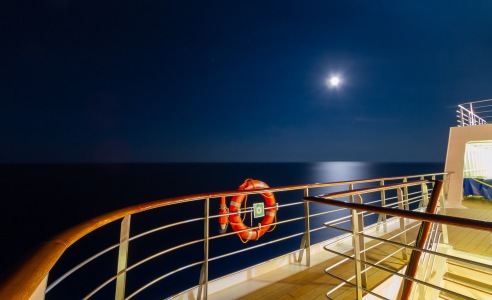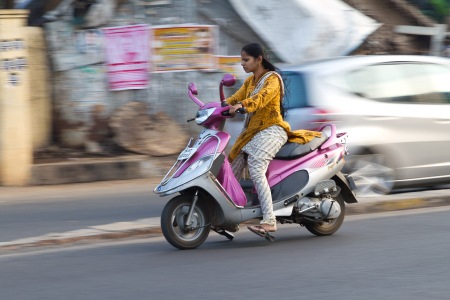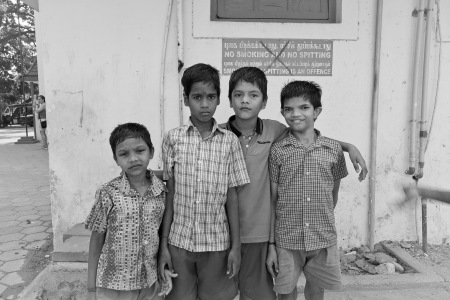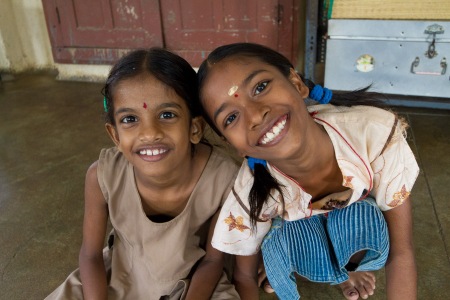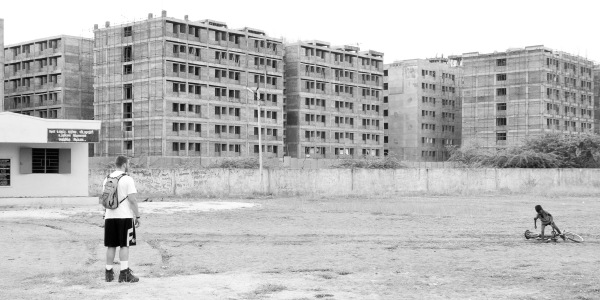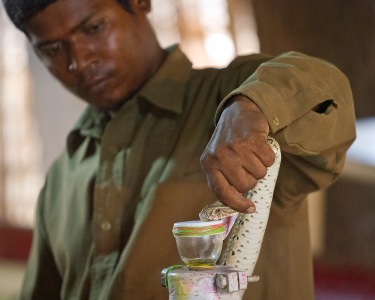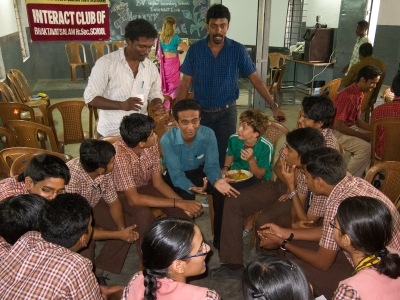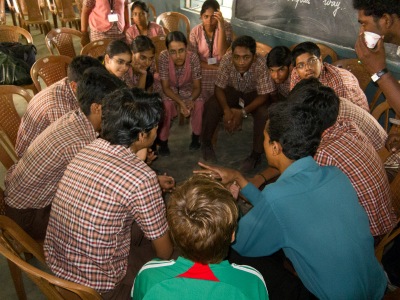October 14, 2011: “So Jeff, you’re in one of the ‘classically’ impoverished countries on the other side of the earth, and we haven’t heard a single word about the ‘starving kids in India’, people begging on the streets, or any of the myriad other typical stories you hear about?
Well, there’s a reason for that, and that’s because I haven’t yet witnessed much, if any of it. Not to suggest that it doesn’t exist, as India’s population growth certainly suggests that they should have a poverty problem to attend to, which they do. But, in four days of traveling in and around Chennai, I just haven’t seen it. In fact, the poverty in Chennai has been far less notable than that in both South Africa and Ghana, perhaps similar to what we witnessed in Casablanca. Chennai seems to be a thriving city (the 4th largest in India), with a growing middle class, kids who are being educated (almost surely better than most of our kids in the U.S.), with infrastructure being upgraded. It’s not at all what I expected, and Heidi—having been to Chennai back in 1988—seems to feel somewhat similarly… [continued below gallery]
…After having spent 4 days in southern India, I’m left puzzled by my experiences thus far, and was therefore looking forward to today’s FDP dealing with the socioeconomic problems in southern India. The location we visited was the Semmancheri unit of the Tamil Nadu Slum Clearance Board, a nearly self-contained community designed to provide re-located tenants with as much infrastructure as possible. Many of the people living there were displaced by the tsunami, some merely moved from ‘slums’ in Chennai to this location nearly 10 miles away, in some cases from the re-appropriation of land adjacent to rivers where construction was planned.
India’s approach is vastly different from South Africa’s; instead of merely building homes for people to buy at reduced rates, they are providing properties at reasonable rental rates (50 to 250 rupees per month, depending on means), and additionally planning all the societal infrastructure necessary for people to live. In addition to the nearly 7,000 5x13m units, they incorporate small parks, shops, schools, health care centers, a community hall, even a cremation ground. Essentially birth-to-death facilities: the hope is that people will want to stay there, try to make lives there, provide services for fellow tenants, and make it their own. They have sewage treatment facilities and recycling/sorting, including a vermicompost facility where worms are introduced to waste to further biodegrade it.
A very thoughtful and potentially sustainable approach to the relocation of relatively poor people stricken with a variety of misfortunes, though not without inherent issues to be resolved. They’ve encountered some potable water issues, in addition to various social issues borne of people of different backgrounds being put together in the same community, in close quarters. Many tenants also don’t feel the property is their own, and instead of fixing things themselves, they call upon (or wait upon) the government agency in charge to come out and fix things that could otherwise be dealt with easily enough. It appeared to be a bit of a work in progress, and I came away a bit unsure how widely-implemented these ‘slum clearance’ communities were. But, it did appear to be a reasonable approach to some of the poverty issues being faced by so many in India, and their rampantly-growing economy makes solutions like this far more palatable than, say, in South Africa, where the government has little expendable income, and what they do have is being spent in questionable ways.
We departed, and asked the tour guide to at least take us through an area which might be considered ‘typical’ of the slums that they are trying to deal with. It was a sobering sight; people living in tents, brick walls apparently fallen from the tsunami, people basically in need of food and water. Much more similar to the vast areas of both Ghana and South Africa that we’d experienced, but here in Southern India, you at least had to go looking for it…
…As we steamed away from Chennai under the light of the moon which illuminated the exhaust trail of the MV Explorer behind us, I reflected upon how confused my visit to India had left me. I think any elaboration on that will have to wait until I’ve had some time to digest our six days in India.
If you’d like to visit my original Blogspot post for this country, please start here: 10/10/11: Hello India!


